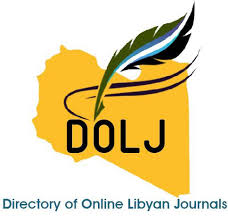The use of Spirometry in COPD diagnosis, auditing a snap shot of the current practice in a Libyan tertiary center’s Chest unit.
DOI:
https://doi.org/10.54361/LJMR.19.2.44Keywords:
Audit, Benghazi, COPD, Prevalence, Spirometry, LibyaAbstract
Background: Chronic Obstructive Pulmonary Disease (COPD) is a highly prevalent condition in Benghazi, Libya, and is well-known to impose a significant burden on global mortality and morbidity. International guidelines firmly establish spirometry as the gold standard for diagnosing and monitoring COPD. However, in routine clinical practice, it is often observed that a diagnosis of COPD is made on clinical grounds alone, without the crucial objective confirmation provided by spirometric testing. Objective: This audit aimed to explore the practice of using spirometry to diagnose COPD, as recommended by international standards, within the Chest Unit of Benghazi Medical Center (BMC). Material and Methods: We conducted a retrospective review of all patient files available in the chest unit during March 2023. Data about patients' demographics and diagnostic workups, particularly the rationale relied upon by physicians to make the diagnosis, including imaging and pulmonary function tests they were compared to the standard practice recommended by the GOLD guidelines for COPD diagnosis. Results: From a total of 1129 outpatient files, we identified 143 patients who had been labeled as having COPD. Their ages ranged from 36 to 85 years, and the vast majority were male. Our analysis revealed that only 88 of these 143 COPD patients (61.5%) had undergone spirometer testing, while the remaining 55 patients (38.5%) had been diagnosed without this essential investigation. Smoking status was not detailed in 41 patients (28.7%), chest radiographs were absent from the files in 67.8% of cases, and CT scans of the chest were documented in only 28.7% of patients. Conclusion: We, in total, achieved 62% of the audit's standard for spirometry use, leading to the inference that spirometry remains underused in the diagnosis of COPD in this snapshot.
Downloads
References
1. Global Initiative for Chronic Obstructive Lung Disease. Global Strategy for the Diagnosis, Management, and Prevention of Chronic Obstructive Pulmonary Disease: 2017 Report [Internet]. GOLD; 2017 [cited 2025 Oct 28]. Available from: https://goldcopd.org/wp-content/uploads/2017/02/wms-GOLD-2017-FINAL.pdf
2. Lozano R, Naghavi M, Foreman K, Lim S, Shibuya K, Aboyans V, et al. Global and regional mortality from 235 causes of death for 20 age groups in 1990 and 2010: a systematic analysis for the Global Burden of Disease Study 2010. Lancet. 2012 Dec 15;380(9859):2095-128.
3. Lange P, Celli B, Agusti A, Boje Jensen G, Divo M, Faner R, et al. Lung-Function Trajectories Leading to Chronic Obstructive Pulmonary Disease. N Engl J Med. 2015 Jul 9;373(2):111-22.
4. National Institute for Health and Care Excellence. Chronic obstructive pulmonary disease in over 16s: diagnosis and management. NICE Guideline CG101. London: NICE; 2010 [updated 2019 Jul; cited 2025 Oct 28]. Available from: https://www.nice.org.uk/guidance/cg101
5. Gaber KA, McGavin CR, Wells IP. Lateral chest X-ray for physicians. J R Soc Med. 2005 Jul;98(7):310-2.
Downloads
Published
Issue
Section
License
Copyright (c) 2025 Ashraf M. Rajab, Khalid A. Gaber (Author)

This work is licensed under a Creative Commons Attribution-NonCommercial-NoDerivatives 4.0 International License.
Open Access Policy
Libyan journal of medical Research (LJMR).is an open journal, therefore there are no fees required for downloading any publication from the journal website by authors, readers, and institution.
The journal applies the license of CC BY (a Creative Commons Attribution 4.0 International license). This license allows authors to keep ownership f the copyright of their papers. But this license permits any user to download , print out, extract, reuse, archive, and distribute the article, so long as appropriate credit is given to the authors and the source of the work.
The license ensures that the article will be available as widely as possible and that the article can be included in any scientific archive.
Editorial Policy
The publication of an article in a peer reviewed journal is an essential model for Libyan journal of medical Research (LJMR). It is necessary to agree upon standards of expected ethical behavior for all parties involved in the act of publishing: the author, the journal editorial, the peer reviewer and the publisher.
Any manuscript or substantial parts of it, submitted to the journal must not be under consideration by any other journal. In general, the manuscript should not have already been published in any journal or other citable form, although it may have been deposited on a preprint server. Authors are required to ensure that no material submitted as part of a manuscript infringes existing copyrights, or the rights of a third party.
Authorship Policy
The manuscript authorship should be limited to those who have made a significant contribution and intellectual input to the research submitted to the journal, including design, performance, interpretation of the reported study, and writing the manuscript. All those who have made significant contributions should be listed as co-authors.
Others who have participated in certain substantive aspects of the manuscript but without intellectual input should only be recognized in the acknowledgements section of the manuscript. Also, one of the authors should be selected as the corresponding author to communicate with the journal and approve the final version of the manuscript for publication in the LJMR.
Peer-review Policy
- All the manuscripts submitted to LJMR will be subjected to the double-blinded peer-review process;
- The manuscript will be reviewed by two suitable experts in the respective subject area.
- Reports of all the reviewers will be considered while deciding on acceptance/revision or rejection of a manuscript.
- Editor-In-Chief will make the final decision, based on the reviewer’s comments.
- Editor-In-Chief can ask one or more advisory board members for their suggestions upon a manuscript, before making the final decision.
- Associate editor and review editors provide administrative support to maintain the integrity of the peer-review process.
- In case, authors challenge the editor’s negative decision with suitable arguments, the manuscript can be sent to one more reviewer and the final decision will be made based upon his recommendations.














